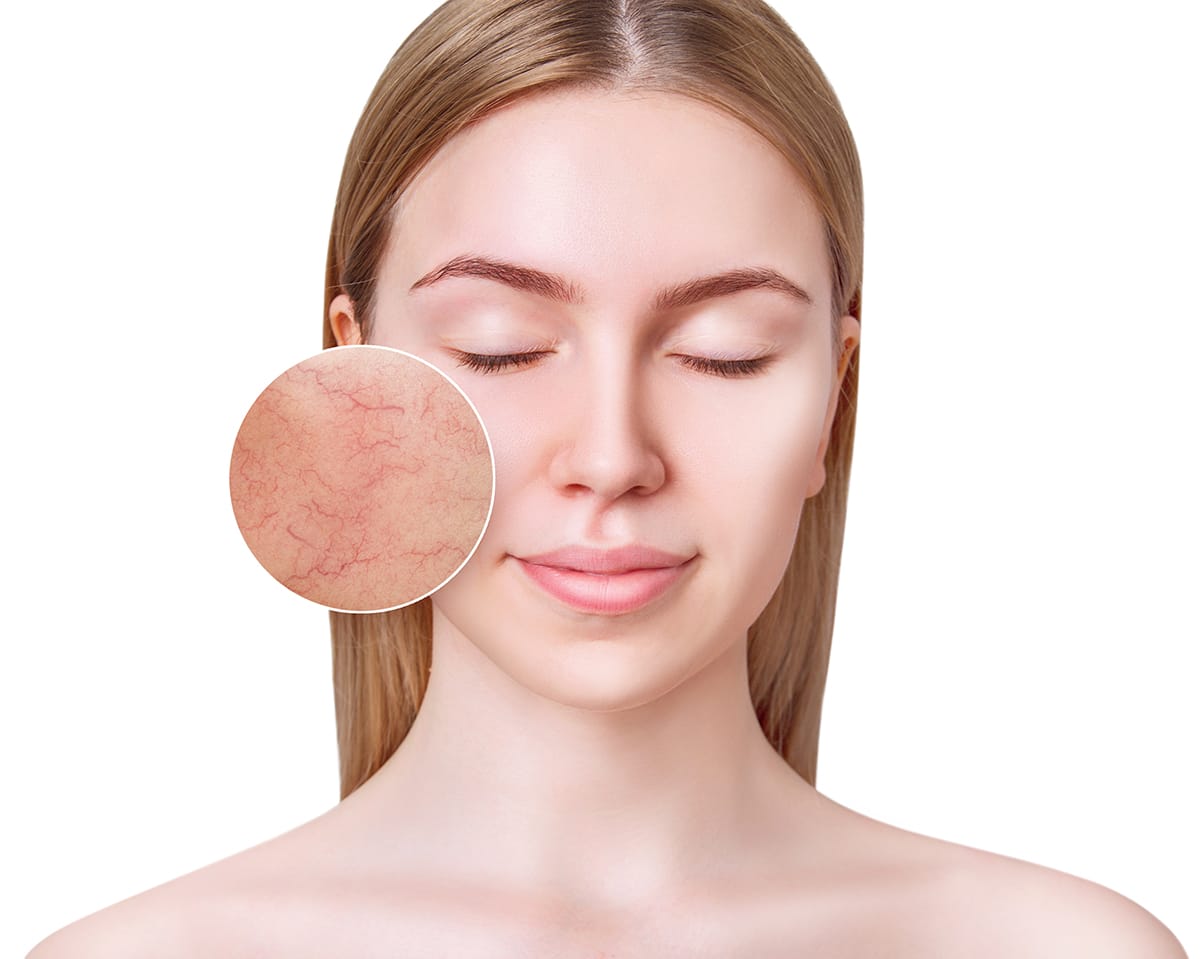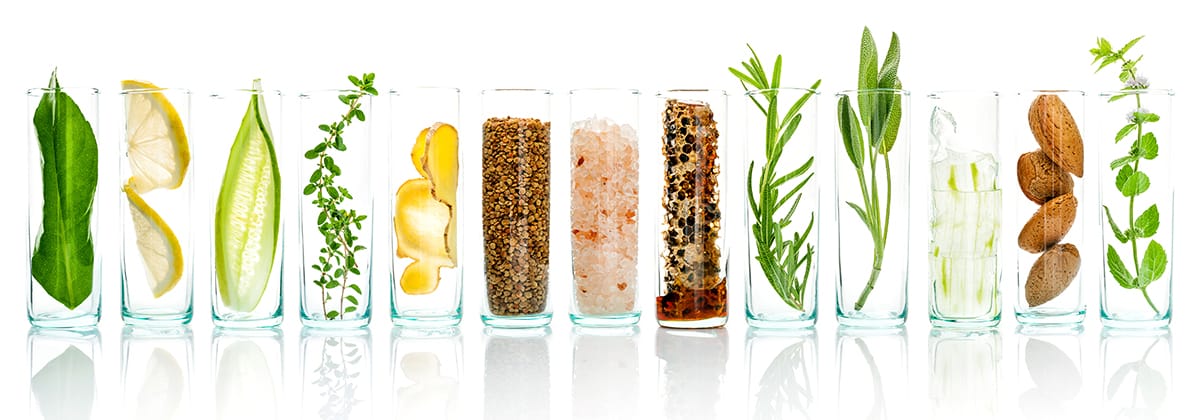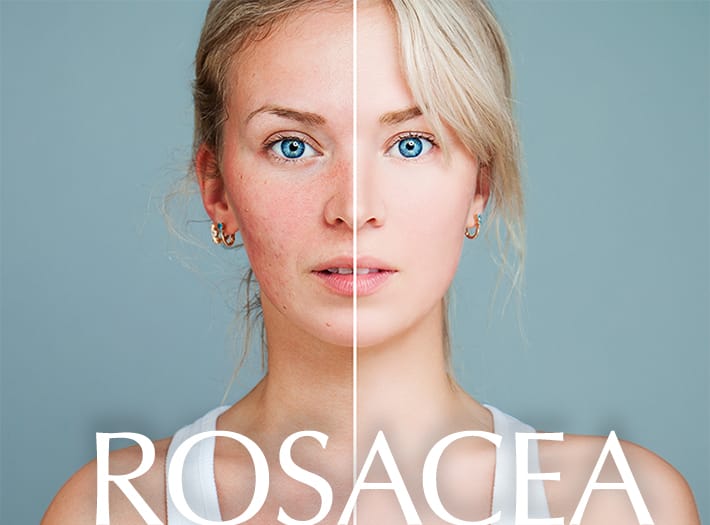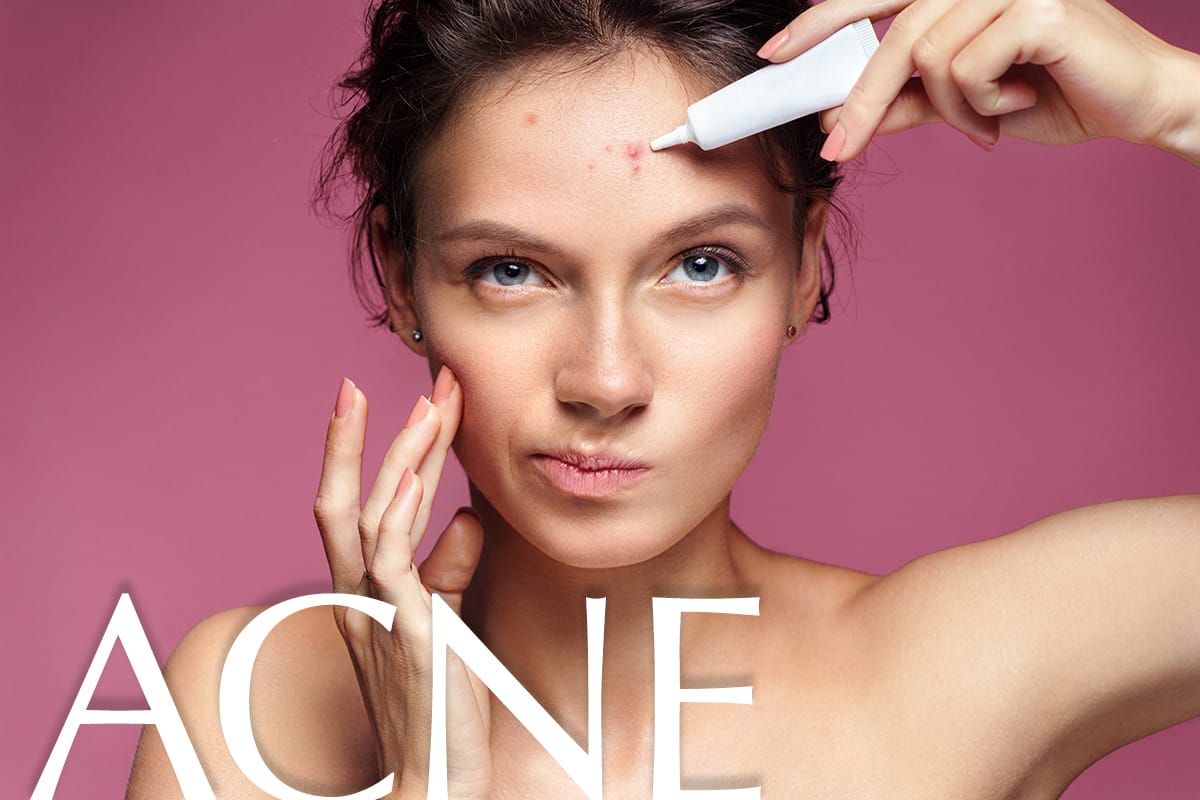Rosacea

By Jackie Washington, Licensed Esthetician
Are you someone who experiences frequent flushing and blushing? Can you see tiny red veins marking areas of your face, and maybe even pimples in those associated areas? You might describe your skin as “sensitive,” and you may even experience stinging when you apply products to your skin. If any of these symptoms describe what you are experiencing, it’s possible that you could have rosacea.
Now you’re wondering, “what is rosacea and how do I get rid of it?” Rosacea is a chronic inflammatory condition of the skin that is marked by episodes of flare-ups and remissions. It is most often localized to the cheeks, nose and forehead, but can also affect the chin and occasionally the eyes. Rosacea causes inflammation in the form of redness, visible blood vessels, acne, swelling, and in more advanced cases, thickening of the skin. Although there is no cure for rosacea, treatments and lifestyle changes can help tremendously with managing your symptoms.
The onset of rosacea typically happens in adults between 30-50 years of age. All skin types can be affected by rosacea, but it is more visibly apparent in those with fair skin, as darker skin types tend to camouflage symptoms better.
Cause
The exact cause of rosacea is still largely unknown, but there’s enough evidence to support some key factors that play a role in its development.
- Genetics- Rosacea is not contagious, however it is very common for it to be passed down the family tree.
- Demodex Mite- Although harmless and a normal inhabitant of human skin, it is thought that those with rosacea have higher numbers of this mite which create just enough irritation to trigger the activation sensors of rosacea.
- Immune System- There’s increasing evidence that the immune system may play a role in the cause of rosacea. The belief is that the inflammatory response in those with rosacea is hyper-sensitive and overreacts where there would normally be no reaction at all.
Symptoms
 Because signs and symptoms differ widely from one individual to the next, rosacea has been categorized into four sub-types to help the community at large better understand the stages while also acknowledging that many symptoms are not stage specific and frequently overlap between the types.
Because signs and symptoms differ widely from one individual to the next, rosacea has been categorized into four sub-types to help the community at large better understand the stages while also acknowledging that many symptoms are not stage specific and frequently overlap between the types.
- Flushing and Redness- The first visible symptoms are the redness and tiny blood vessels that seem to become more persistent toward the central part of the face. In tandem, you may also notice swelling, dry skin, scaling, a sense of warmth or stinging in those areas that can pop up and then disappear for a time.
- Acne- In addition to the above symptoms, many rosacea sufferers will also suddenly get pimples in the areas where they are red, with oil seeming to increase in some people but not in others.
- Skin Thickening- In more advanced cases the skin will begin to thicken typically on the nose (called rhinophyma) but can happen on the chin, forehead and cheeks accompanied bumpy texture and large pores. Thickening of the skin is considered a rare occurrence among the rosacea population.
- Ocular Rosacea- For some, rosacea can affect the eyes. With this sub-type, eyes can have visible blood vessels on the eyelid as well as on the eye itself, appearing bloodshot. Many report dryness, itchiness, stinging, and sensitivity to light. As with skin thickening, this is considered an advanced stage, but not a certainty if you have rosacea.
Triggers




There are many “triggers” that are widely recognized for being a direct cause of a flare-up, these can be internal, external, foods we eat and environmental factors. Not all triggers will apply to you, since each body is as different as our lifestyles and environments in which we live.
- Internal triggers refer to emotional factors like stress, embarrassment and anxiety that are felt within the body but become visible on the face in the form of a flare.
- External triggers are caused by everyday items that come in contact with the skin, such as creams, hair sprays, perfumes and cosmetics.
- Common food triggers include spicy foods, alcoholic beverages, and hot drinks like coffee and tea. Your personal triggers could be dairy, certain vegetables, and so on.
- Environmental triggers are things like sun exposure, temperature extremes, exercise that causes the face to heat up, hot showers, and smoke.
Many begin the process of identifying triggers through journaling.
Treating your skin gently during your skin care routine while using products geared toward sensitive skin is encouraged to avoid the next potential flare.

Ingredients Tips:
Look for products that fight redness and contain soothing ingredients such as allantoin; Acetyl Tetrapeptide-40; Avena Sativa (Oat) Kernel Oil; niacinamide, Mirabilis Jalapa Extract, beta-glucan;
camellia sinensis (green tea) and Chamomilla Matricaria Recutita (German Chamomile) Flower Extract
Ingredients to avoid:
Fragrances can be sensitizing so look for the term “fragrance free” on the product label. Avoid overly dry ingredients such as hamamelis virginia (witch hazel) or Benzoyl Peroxide as well as physical and chemical exfoliators, except for Azelaic Acid which is a recognized beneficial exfoliator for rosacea.
Wearing a physical sunscreen is critical for all skin types but especially skin with rosacea. Finding sunscreens that contain either zinc oxide or titanium dioxide is an easy fix in combating the inflammatory effects of everyday sun exposure on rosacea skin.
By identifying your triggers and eliminating the culprits, you can minimize the frequency of rosacea flare-ups.


